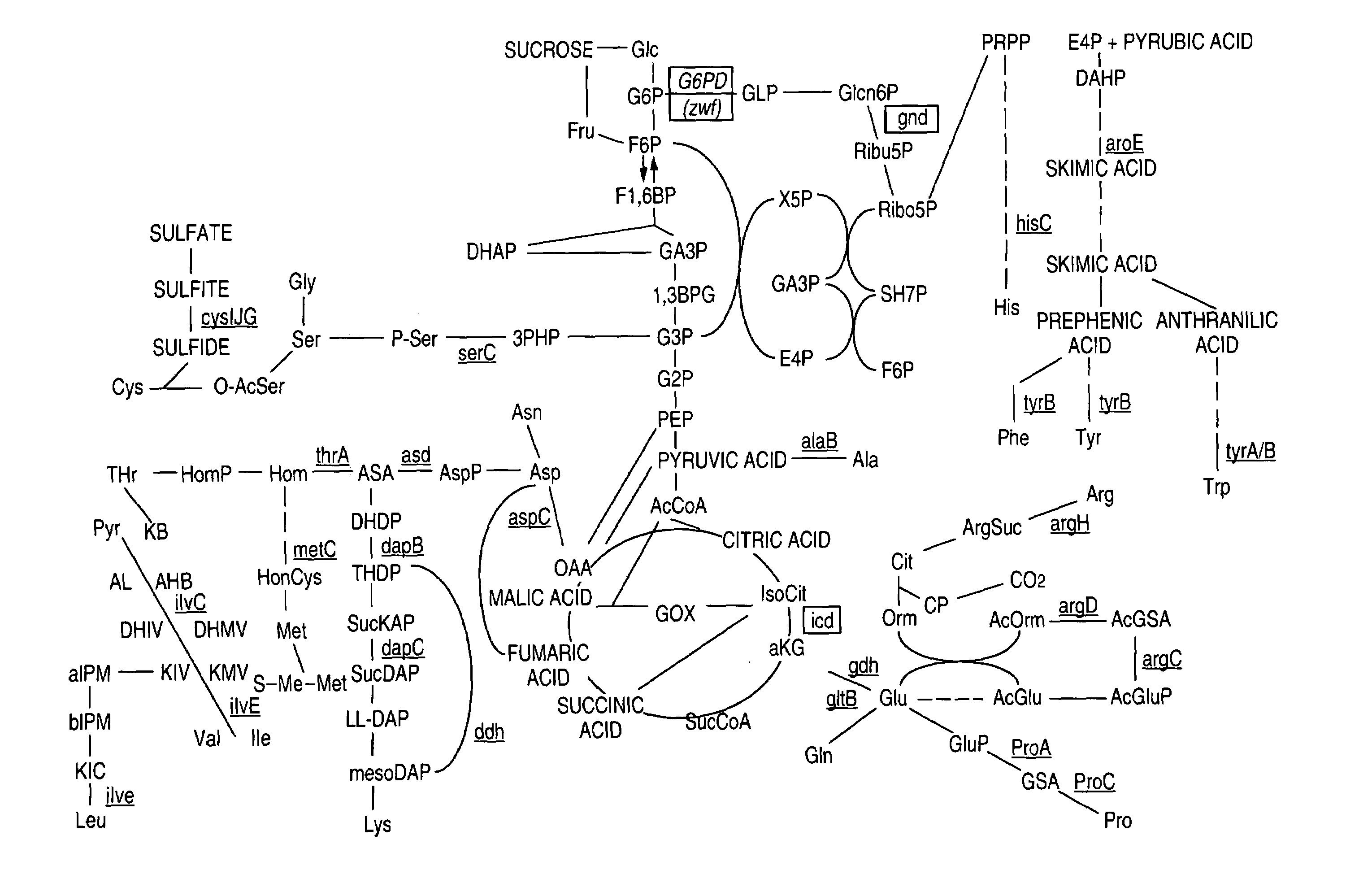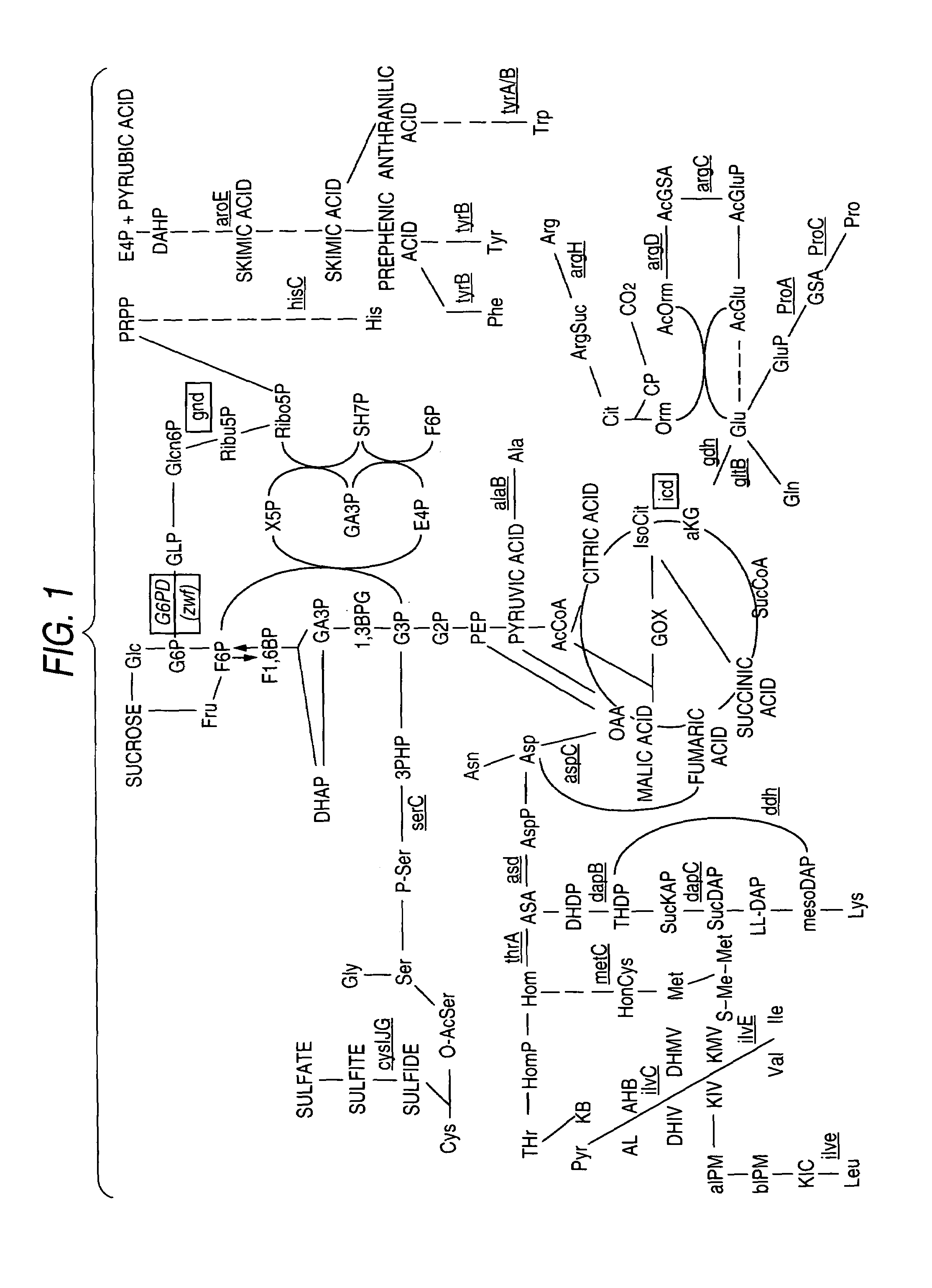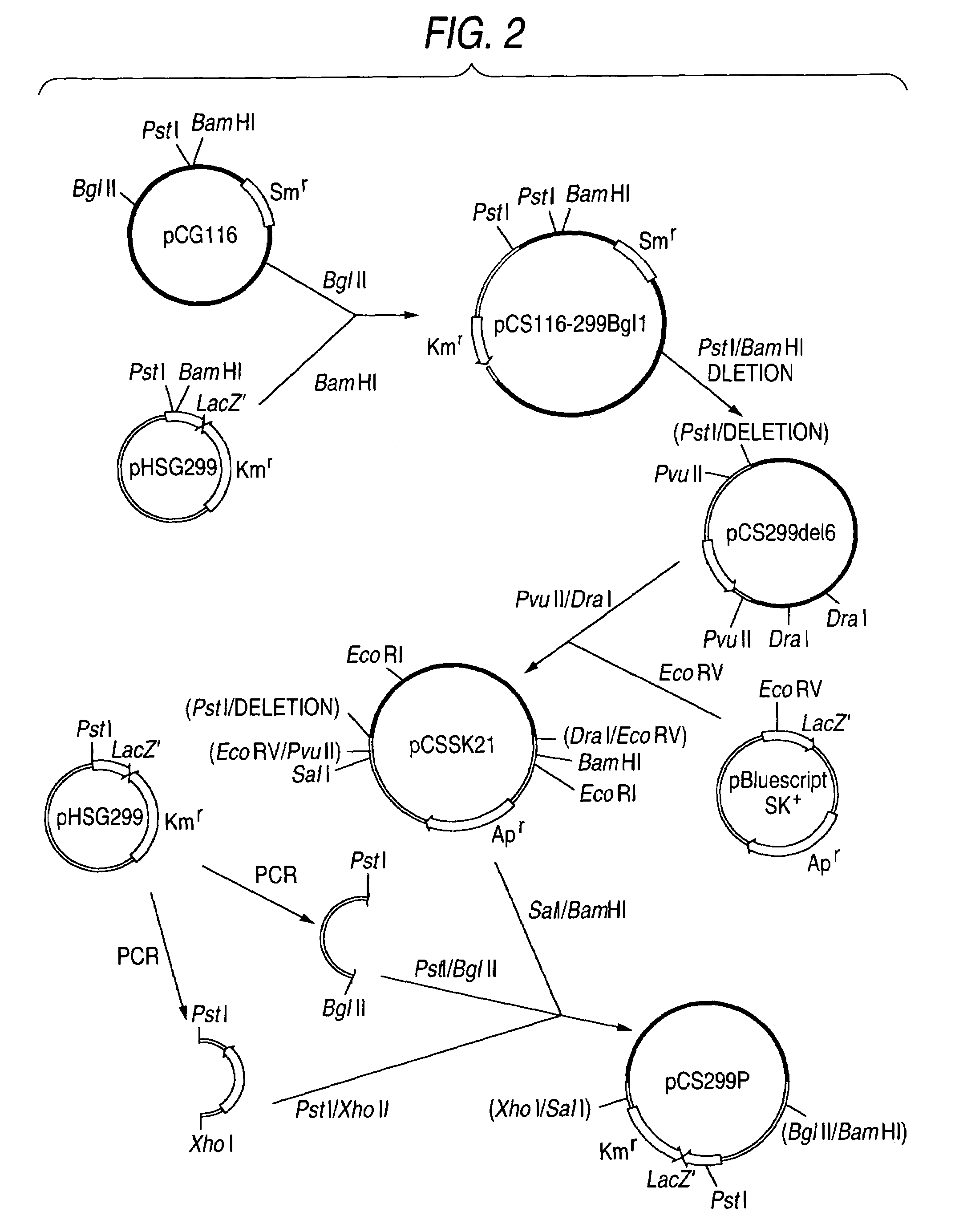Glucose-6-phosphate dehydrogenase
a glucose-6-phosphate and dehydrogenase technology, applied in the field of new glucose-6-phosphate dehydrogenase, can solve the problem of limited nadph-supplying enzymes
- Summary
- Abstract
- Description
- Claims
- Application Information
AI Technical Summary
Benefits of technology
Problems solved by technology
Method used
Image
Examples
example 1
Preparation of Novel G6PD Gene
[0087](1) Determination of G6PD Gene Nucleotide Sequence
[0088]Corynebacterium glutamicum No. 58 (hereinafter referred to as “No. 58 strain”) is an L-lysine producing strain obtained by applying a mutagenizing operation to Corynebacterium glutamicum ATCC 13032 (hereinafter referred to as “ATCC 13032 strain”).
[0089]The strain has been deposited on Apr. 14, 2000, in International Patent Organism Depositary, National Institute of Advanced Industrial Science and Technology, AIST Tsukuba Central 6, 1-1, Higashi 1-Chome Tsukuba-shi, Ibaraki-ken, Japan (the old name: National Institute of Bioscience and Human technology, Agency of Industrial Science and Technology: 1–3, Higashi 1-chome, Tsukuba-shi, Ibaraki-ken, Japan) with accession number FERM BP-7134 under the Budapest Treaty. G6PD gene of the ATCC 13032 strain and No. 58 strain were cloned as follows.
[0090]A chromosomal DNA was prepared from each strain by the method of Saito et al. [Biochimica et Biophysic...
example 2
Effect of the Novel G6PD Gene L-Lysine Production
[0098](1) Construction of Vector for Gene Substitution
[0099]In order to examine the effect of amino acid substitution mutation in G6PD shown in Example 1, the G6PD gene of No. 58 strain was substituted into a mutant.
[0100]A vector for gene substitution for this substitution was constructed as follows.
[0101]Single-stranded 37 mer DNA of and 29 mer DNA comprising the nucleotide sequences represented by SEQ ID NOs:5 and 6, respectively, were synthesized according to the conventional method. They were mixed in 50 μl of 0.1 M NaCl to give a respective concentration of 10 pmole / μl, and allowed to stand at 95° C. for 2 minutes and then at 65° C. for 15 minutes. After cooling to 30° C. over 3 hours, both of the single-stranded DNA molecules were paired to obtain a double-stranded DNA.
[0102]pHSG299 (manufactured by Takara Shuzo) was digested with EcoRI and SphI (both manufactured by Takara Shuzo), subjected to agarose gel electrophoresis and t...
PUM
| Property | Measurement | Unit |
|---|---|---|
| temperature | aaaaa | aaaaa |
| pH | aaaaa | aaaaa |
| resistance | aaaaa | aaaaa |
Abstract
Description
Claims
Application Information
 Login to View More
Login to View More - R&D
- Intellectual Property
- Life Sciences
- Materials
- Tech Scout
- Unparalleled Data Quality
- Higher Quality Content
- 60% Fewer Hallucinations
Browse by: Latest US Patents, China's latest patents, Technical Efficacy Thesaurus, Application Domain, Technology Topic, Popular Technical Reports.
© 2025 PatSnap. All rights reserved.Legal|Privacy policy|Modern Slavery Act Transparency Statement|Sitemap|About US| Contact US: help@patsnap.com



